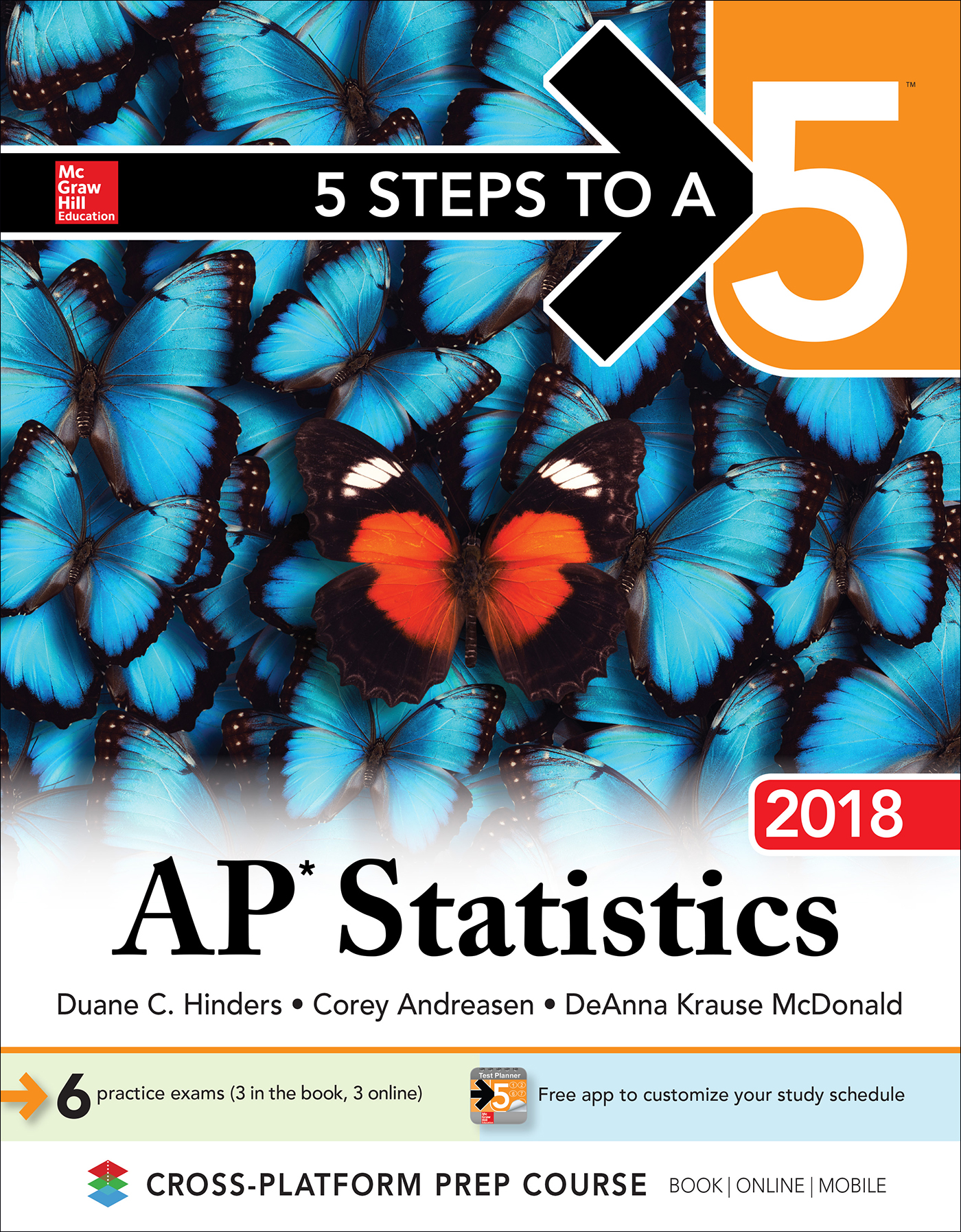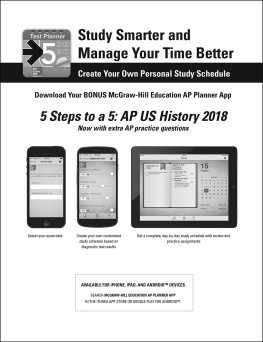Contents
Guide
Page List


Copyright 2017 by McGraw-Hill Education. All rights reserved. Except as permitted under the United States Copyright Act of 1976, no part of this publication may be reproduced or distributed in any form or by any means, or stored in a database or retrieval system, without the prior written permission of the publisher.
ISBN: 978-1-25-986377-6
MHID: 1-25-986377-8.
The material in this eBook also appears in the print version of this title: ISBN: 978-1-25-986376-9, MHID: 1-25-986376-X.
eBook conversion by codeMantra
Version 1.0
All trademarks are trademarks of their respective owners. Rather than put a trademark symbol after every occurrence of a trademarked name, we use names in an editorial fashion only, and to the benefit of the trademark owner, with no intention of infringement of the trademark. Where such designations appear in this book, they have been printed with initial caps.
McGraw-Hill Education eBooks are available at special quantity discounts to use as premiums and sales promotions or for use in corporate training programs. To contact a representative, please visit the Contact Us page at www.mhprofessional.com.
McGraw-Hill Education, the McGraw-Hill Education logo, 5 Steps to a 5, and related trade dress are trademarks or registered trademarks of McGraw-Hill Education and/or its affiliates in the United States and other countries and may not be used without written permission. All other trademarks are the property of their respective owners. McGraw-Hill Education is not associated with any product or vendor mentioned in this book.
AP, Advanced Placement Program, and College Board are registered trademarks of the College Board, which was not involved in the production of, and does not endorse, this product.
The series editor was Grace Freedson, and the project editor was Del Franz. Series design by Jane Tenenbaum.
TERMS OF USE
This is a copyrighted work and McGraw-Hill Education and its licensors reserve all rights in and to the work. Use of this work is subject to these terms. Except as permitted under the Copyright Act of 1976 and the right to store and retrieve one copy of the work, you may not decompile, disassemble, reverse engineer, reproduce, modify, create derivative works based upon, transmit, distribute, disseminate, sell, publish or sublicense the work or any part of it without McGraw-Hill Educations prior consent. You may use the work for your own noncommercial and personal use; any other use of the work is strictly prohibited. Your right to use the work may be terminated if you fail to comply with these terms.
THE WORK IS PROVIDED AS IS. McGRAW-HILL EDUCATION AND ITS LICENSORS MAKE NO GUARANTEES OR WARRANTIES AS TO THE ACCURACY, ADEQUACY OR COMPLETENESS OF OR RESULTS TO BE OBTAINED FROM USING THE WORK, INCLUDING ANY INFORMATION THAT CAN BE ACCESSED THROUGH THE WORK VIA HYPERLINK OR OTHERWISE, AND EXPRESSLY DISCLAIM ANY WARRANTY, EXPRESS OR IMPLIED, INCLUDING BUT NOT LIMITED TO IMPLIED WARRANTIES OF MERCHANTABILITY OR FITNESS FOR A PARTICULAR PURPOSE. McGraw-Hill Education and its licensors do not warrant or guarantee that the functions contained in the work will meet your requirements or that its operation will be uninterrupted or error free. Neither McGraw-Hill Education nor its licensors shall be liable to you or anyone else for any inaccuracy, error or omission, regardless of cause, in the work or for any damages resulting therefrom. McGraw-Hill Education has no responsibility for the content of any information accessed through the work. Under no circumstances shall McGraw-Hill Education and/or its licensors be liable for any indirect, incidental, special, punitive, consequential or similar damages that result from the use of or inability to use the work, even if any of them has been advised of the possibility of such damages. This limitation of liability shall apply to any claim or cause whatsoever whether such claim or cause arises in contract, tort or otherwise.
CONTENTS
PREFACE
Congratulations, you are now an AP Statistics student. AP Statistics is one of the most interesting and useful subjects you will study in school. Sometimes it has the reputation of being easy compared to calculus. However, it can be deceptively difficult, especially in the second half. It is different and challenging in its own way. Unlike calculus, where you are expected to get precise answers, in statistics you are expected to learn to become comfortable with uncertainly. Instead of saying things like, The answer is you will more often find yourself saying things like, We are confident that or We have evidence that Its a new and exciting way of thinking.
How do you do well on the AP exam? By reading this book; by staying on top of the material during your AP Statistics class; by studying when it is time to study. Note that the questions on the AP exam are only partially computationalthey also involve thinking about the process you are involved in and communicating your thoughts clearly. You can always use a calculator so the test designers make sure the questions involve more than just button pushing.
This book is self-contained in that it covers all of the material required by the course content description published by the College Board. However, it is not designed to substitute for an in-class experience or for your textbook. Use this book as a supplement to your in-class studies, as a reference for a quick refresher on a topic, and as one of your major resources as you prepare for the AP exam.
This edition extends and updates previous editions. It takes into account changes in thinking about AP Statistics since the publication of the first edition in 2004 and includes some topics that should help you understand what is important when answering questions on the exam.
You should begin your preparations by reading through the Introduction and Step 1. However, you shouldnt attempt the Diagnostic Exam in until you have been through all of the material in the course. Then you can take the exam to help you determine which topics need more of your attention during the course of your review. Note that the Diagnostic Exam simulates the AP exam to a reasonable extent (although the questions are more basic) and the Practice Exams are similar in style and length to the AP exam.
So, how do you get the best possible score on the AP Statistics exam?
Pick one of the study plans from this book.
Study the chapters and do the practice problems.
Take the Diagnostic Exam and the Practice Exams.
Review as necessary based on your performance on the Diagnostic Exam and the Practice Exams.
Get a good nights sleep before the exam.
Selected Epigrams about Statistics
All models are wrong, but some of them are useful.
George Box
Very few people actually use calculus in a conscious, meaningful way in their day-to-day lives. On the other hand, statisticsthats a subject that you could, and should, use on a daily basis.
Arthur Benjamin
If the statistics are boring, youve got the wrong numbers.
Edward Tufte
I keep saying the sexy job in the next ten years will be statisticians.
Hal Varian
The best thing about being a statistician is that you get to play in everyones backyard.
John Tukey
The lottery is a tax on people who flunked math




